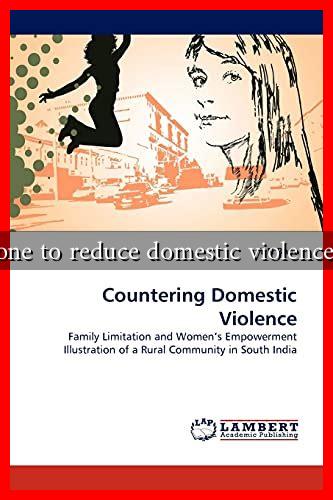-
Table of Contents
- What Can Be Done to Reduce Domestic Violence in Rural Areas?
- The Unique Challenges of Rural Areas
- Strategies for Reducing Domestic Violence
- 1. Community Education and Awareness
- 2. Strengthening Support Services
- 3. Empowering Local Law Enforcement
- 4. Engaging Men and Boys
- Case Studies and Success Stories
- Conclusion
What Can Be Done to Reduce Domestic Violence in Rural Areas?
Domestic violence is a pervasive issue that affects individuals and families across all demographics, but it is particularly acute in rural areas. The unique challenges faced by rural communities, such as isolation, limited access to resources, and cultural attitudes, can exacerbate the prevalence of domestic violence. This article explores effective strategies to reduce domestic violence in these regions, highlighting the importance of community involvement, education, and resource accessibility.
The Unique Challenges of Rural Areas
Rural areas often present distinct challenges that can hinder efforts to combat domestic violence:
- Isolation: Victims may feel trapped due to geographical isolation, making it difficult to seek help.
- Limited Resources: Many rural communities lack shelters, counseling services, and legal assistance.
- Cultural Attitudes: Traditional views on gender roles and family privacy can discourage victims from speaking out.
- Economic Factors: Economic dependency on abusers can make it challenging for victims to leave abusive situations.
Strategies for Reducing Domestic Violence
To effectively address domestic violence in rural areas, a multi-faceted approach is necessary. Here are several strategies that can be implemented:
1. Community Education and Awareness
Raising awareness about domestic violence is crucial in changing societal attitudes. Educational programs can help communities understand the signs of abuse and the resources available for victims. Initiatives may include:
- Workshops and seminars in schools and community centers.
- Public service announcements through local media.
- Collaboration with local leaders to promote discussions on domestic violence.
2. Strengthening Support Services
Enhancing the availability of support services is vital for victims seeking help. This can be achieved through:
- Establishing mobile crisis units that can reach remote areas.
- Creating partnerships with local healthcare providers to offer confidential screenings and referrals.
- Developing online resources and hotlines that provide immediate assistance.
3. Empowering Local Law Enforcement
Law enforcement plays a critical role in addressing domestic violence. Training programs can equip officers with the skills needed to handle these sensitive situations effectively. Key components include:
- Specialized training on domestic violence dynamics and victim support.
- Establishing protocols for responding to domestic violence calls.
- Building trust within the community to encourage reporting of incidents.
4. Engaging Men and Boys
Involving men and boys in the conversation about domestic violence is essential for changing cultural norms. Programs that focus on healthy relationships and respect can help foster a culture of non-violence. Initiatives may include:
- Mentorship programs that promote positive male role models.
- Workshops that challenge traditional notions of masculinity.
- Community campaigns that encourage men to speak out against violence.
Case Studies and Success Stories
Several rural communities have successfully implemented programs to reduce domestic violence. For example, the National Coalition Against Domestic Violence has supported initiatives in rural areas that focus on community engagement and resource development. In one case, a small town in the Midwest established a local task force that brought together law enforcement, healthcare providers, and community leaders to create a comprehensive response to domestic violence. As a result, reports of domestic violence decreased by 30% over three years.
Conclusion
Reducing domestic violence in rural areas requires a concerted effort from the entire community. By focusing on education, enhancing support services, empowering law enforcement, and engaging men and boys, rural communities can create a safer environment for all. It is essential to recognize that while the challenges are significant, the potential for change is equally powerful. Through collaboration and commitment, we can work towards a future where domestic violence is no longer tolerated, and victims have the support they need to reclaim their lives.

